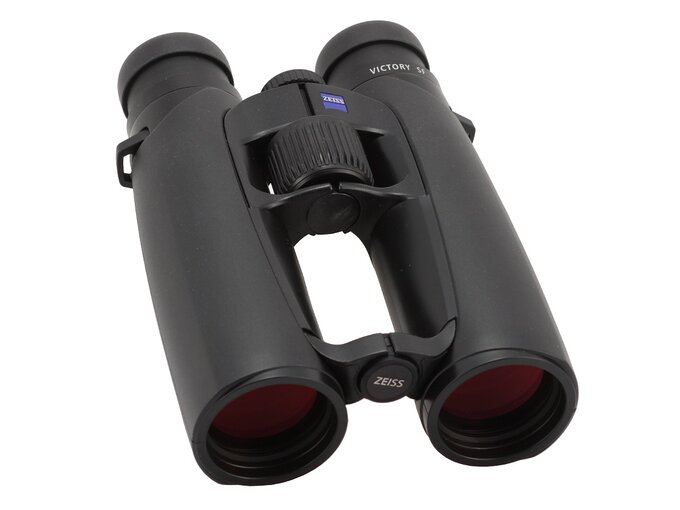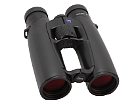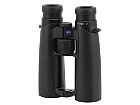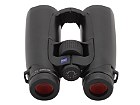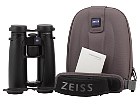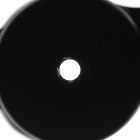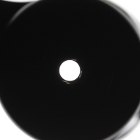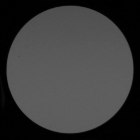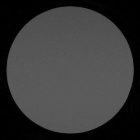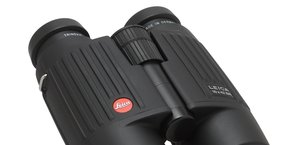Carl Zeiss Victory SF 8x42
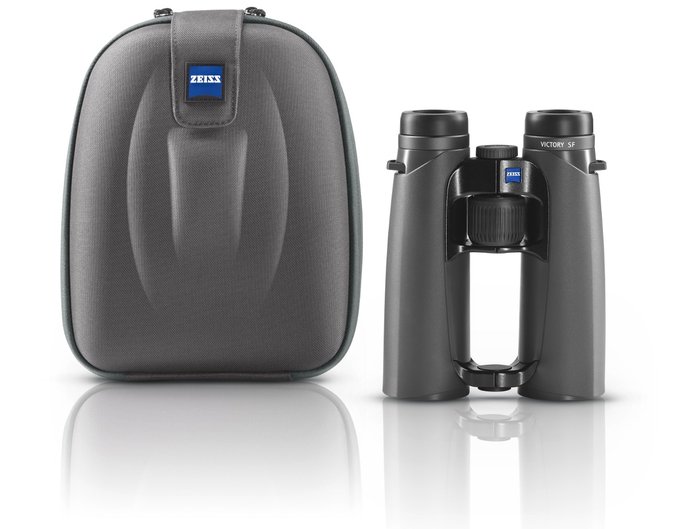 |
One glance at the parameters allow you to say that indeed the Victory SF 8x42 offers you more than its Victory HT series equivalent. The field of view increased by over 0.6 of a degree and now reaches a very good value of 8.4 degrees. What's more the eye relief distance increased to 18 mm, making observations even more comfortable; the minimum focusing distance decreased to 1.5 meters, another good piece of news.
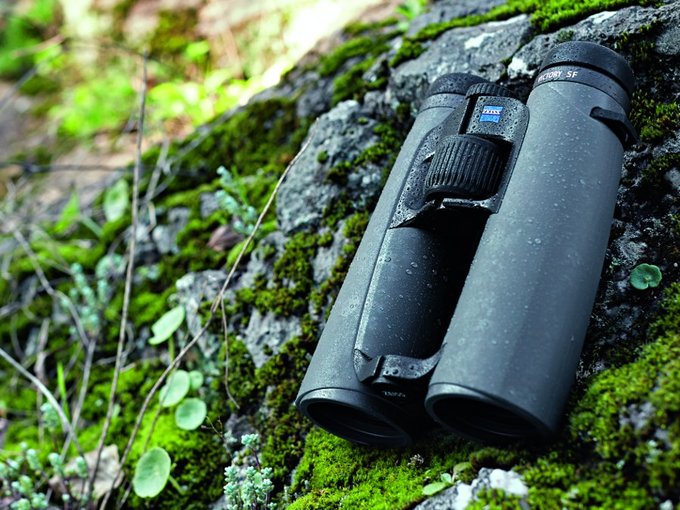 |
When it comes to optics there have been a lot of changes. The number of elements in the objective lens decreased from four to three (2+1 system) but a completely new type of glass, called low disperison Ultra-FL, was introduced as well. What's interesting, the prisms are set in the roof Schmidt-Pechan system, they are phase correction coated and feature a reflective surface composed of multi-layer dielectric coatings (over 70 layers). The construction of the eyepiece is really impressive, as it consists of as much as 7 elements, guaranteeing not only a wide field of view, but also one that is flat and perfectly corrected from edge to edge.
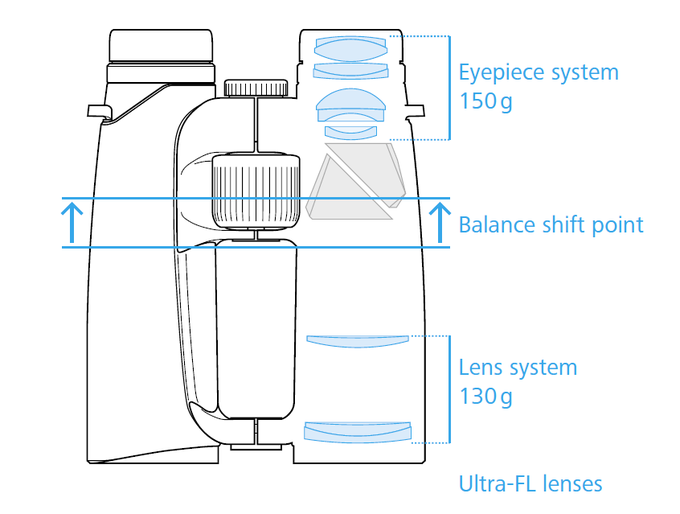 |
You should also mention Schott HT (High Transmisson) glass and the fact that all air-to-glass surfaces are covered by anti-reflection multi coatings T*. All these features are supposed to ensure the highest transmission of the whole optical system (about 92%) and perfect colour rendition. Additionally, the outer elements are protected by LotuTec coatings that prevent dirt and humiditiy from adhering to the surface and make the glass far easier to clean.
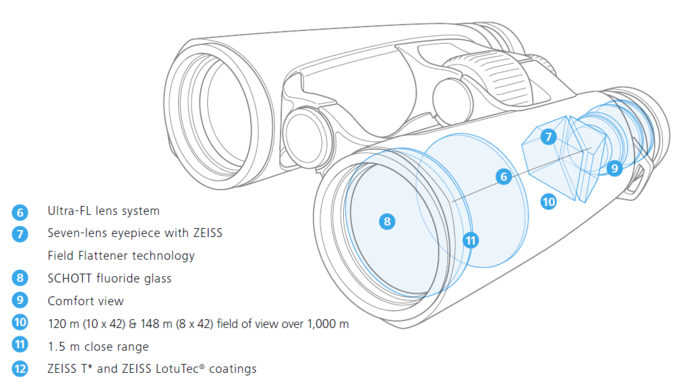 |
The casing of the binoculars, made of magnesium composites, is exactly as sturdy and weather-sealed as the casings of the Victory HT series instruments. Still, the appearance has changed a lot because here you deal with an open hinge type of construction.
The best ergonomy possible is one of Zeiss's priorities. You might start with the position of the central focusing wheel. In the case of the rivals and the Victory HT series the wheel is positioned closer to the eyepieces; in the case of the Victory SF series it is lined up perfectly with your index finger so you don't have to angle it away in order to reach it.
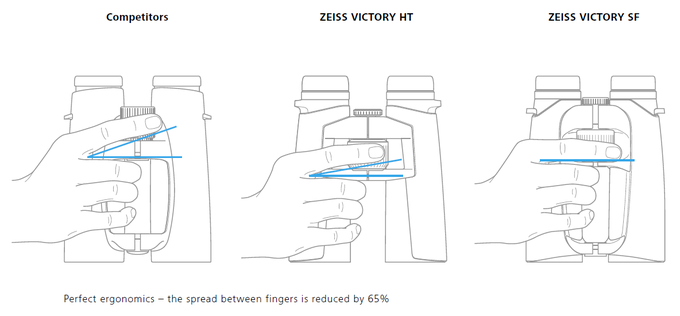 |
The producers also redesigned the balance point of the binoculars. The eyepiece system is complex enough to weigh more than the objective – as a result the balance point is closer to your eyes. It ensures a better stabilization, so important if you have to hold the binoculars for a longer time.
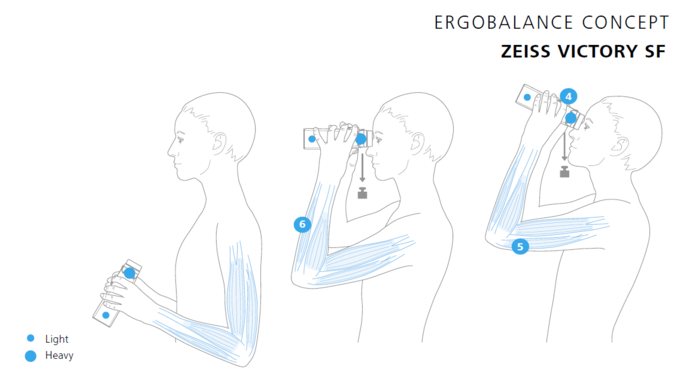 |
Buyers get in the box with the binoculars: joined caps for objectives and eyepieces, a stylish, hard case, and a comfortable strap. The binoculars come with a 10-year warranty period of the producer.
| Magnification | Lens diameter | Angular field of view | Prisms | Eye relief | Weight | Price |
|---|---|---|---|---|---|---|
| 8 | 42 | 148/1000(8.4o) | BaK-4/roof | 18 mm | 780 g | 10700 PLN |
Summary
Pros:
- high quality, solid casing,
- wide field of view,
- high transmission,
- proper correction of chromatic aberration,
- negligible astigmatism,
- low coma,
- sharp images almost till the very edge of that very wide field of view,
- circular pupils against a dark background,
- high quality BaK-4 prisms,
- good antireflection coatings,
- low brightness loss on the edge of the field,
- clean, sensibly darkened interiors of the tubes,
- sharp images already from 1.55 metres.
- transmission graph could have been flatter.
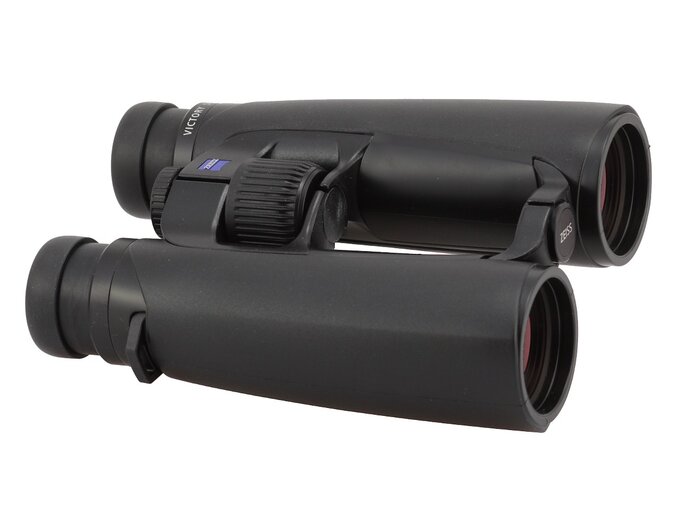 |
In the meantime Zeiss did a quick facelift of their Victory SF series and all problems connected to unwanted reflections were removed. Anyway the 8x42 model is completely free of that flaw and, what's important, it fared much better than its newer and smaller 8x32 brother when it comes to the performance against bright light.
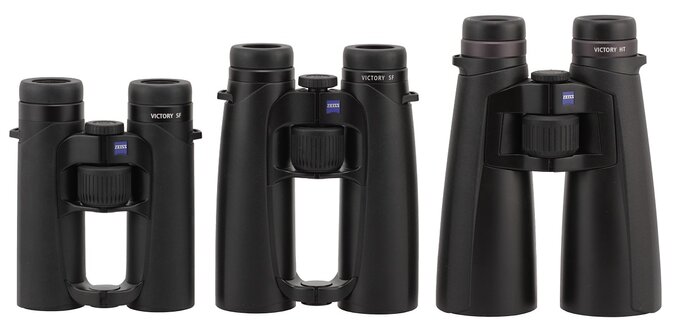 Zeiss Victory SF 8x32, Zeiss Victory SF 8x42 and Zeiss Victory HT 8x54. |
For one thing, their transmission graphs differ significantly. The Zeiss fares better in the centre of the visible spectrum but its graph is not as flat as that of the Swarovski. As a result the rival of the tested binoculars renders colours better and its images seem to be clearer and crisper. The Swarovski also corrects distortion better and its inner tubes are blackened more thoroughly.
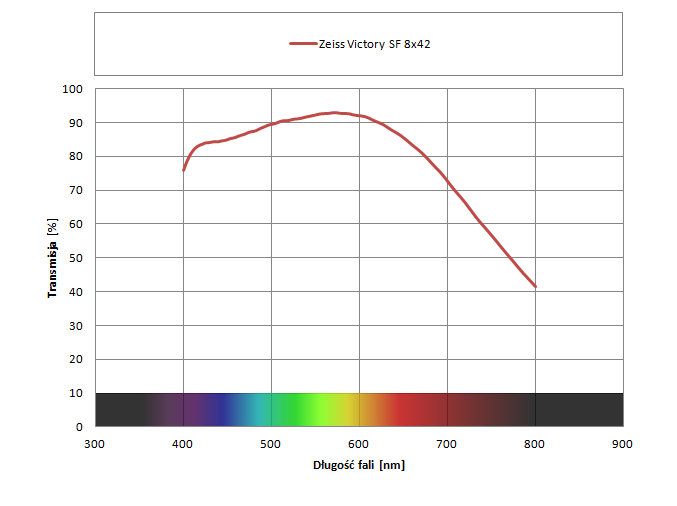 |
The Zeiss might have one problem, though – their flagship pair of binoculars has to face the no-longer-flagship model of the rival. After the launch of the Swarovski NL Pure, the EL Swarovision series occupies actually a lower segment and, it seems, currently Zeiss can offer no equivalent of the NL Pure in their line-up. I admit I am very curious what their next move will be...




